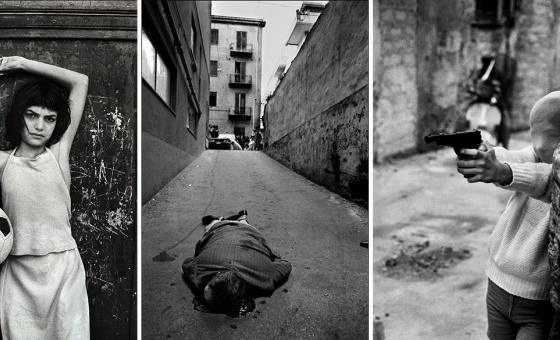This is the last article you can read this month
You can read more article this month
You can read more articles this month
Sorry your limit is up for this month
Reset on:
Please help support the Morning Star by subscribing here
A GLORIOUS History, Tony Burke and Ann Field’s new history of the print and papermaking unions of Britain and Ireland, is a glorious spectacle.
The book — launched tonight at the Marx Memorial Library — is a beauty to behold with its reproductions, mostly courtesy of the library’s own Printworkers’ Collection, of print union certificates, posters and photographs of workers in struggle.
Arranged thematically rather than chronologically, the book briskly runs you through interrelated themes like the wages struggle, women’s struggle for equal pay and representation and international solidarity.
“That’s to make it easier to read,” Field explains when I meet her and Burke to discuss the book. “Previous histories have been written, some of them are super, but they’re all tribal — written from the perspective exclusively of the bookbinders, or of the London compositors.”
With so many different specialised unions springing up for particular aspects of printing and publishing and a centuries-long process of evolution and amalgamation, a chronological history might end up “being like the first chapters of the Bible — so-and-so begat so-and-so,” Field points out.
“What we were interested in was, why did people join unions in the first place?”
“The print unions and papermakers were the first to recognise that what was important was collective bargaining,” Burke argues. “You see in the very early days meetings to demand pay increases across the board — not nationally, but in local towns — so the Manchester and Salford Compositors meet the employers as a body, and start to negotiate.
“The employers didn’t like it but these people were extremely industrially powerful.”
The battles were not just over wages, but feature a fight to reduce working hours that spans two centuries, with a 75-hour working week in 1787 cut in half to 37-and-a-half hours by 1982.
And for all their industrial power, they were up against merciless repression.
In 1786 24 London bookbinders were prosecuted for conspiracy at the Old Sessions House that still stands across from the Marx Memorial Library on London’s Clerkenwell Green for striking for a reduction in the 14-hour day; five were thrown into prison. Thousands of pounds were raised in solidarity and despite the sentences, their demand for a one-hour reduction was agreed the following year.
“Between us we made some amazing discoveries,” Field says. “Who knew that papermakers were transported to Australia before the Tolpuddle Martyrs?
“It places that famous case in context: for 30 or 40 years trade unionists were being transported, and one reason the campaign to free the Tolpuddle Martyrs was successful was because these campaigns had been developing for decades.”
With the government now pushing draconian legislation to curb protest rights and attack the right to strike, is it back to the bad old days?
“This Tory government is rolling things back as far as it can,” says Burke.
Understanding our history is key to prevent it being repeated. The whole history of the labour movement sees employers and the state seeking to attack workers’ pay and conditions and break their ability to resist.
“You see it even now with the rollback of the Working Time Regulations and so on.” In the 19th century trade unionists might be deported to Van Diemen’s Land (Tasmania). “I’m not suggesting they could get away with that right now — but look at what’s happening, they don’t worry about deporting people to Rwanda, do they?”
Repression of print and publishing workers was intertwined from the start with the struggle for a free press.
“But as the industry industrialised and commercialised, the so-called freedom of the press, the employers grabbed that for themselves,” says Field.
“Previously, it was freedom to publish for small organisations like workshops, and the campaigns for press freedom from the state and church in the 16th, 17th and 18th centuries.
“But by the 19th century employers had commandeered that concept for their own devices and have done ever since.”
Organisations like the Campaign for Press and Broadcasting Freedom have always stressed the importance of challenging monopoly ownership of the media to develop a truly free press, and Field agrees that the current online landscape is even more corporate-dominated than the traditional media. “Even where they do not originate the material they can distort it, censor it, block it.”
The battle for a workers’ media, so central to the mission of a co-operative, labour movement newspaper like the Morning Star, is an old one and one that needs fighting again and again.
Field recalls that the Daily Herald evolved from the strike bulletin of London compositors taking action for a 48-hour week in 1911. Yet its modern incarnation, The Sun — a name it was relaunched under in 1964 — is one of the most viciously anti-union newspapers in existence.
Reading the book, it is striking how often workers are provoked into action as a defensive measure — to resist bids by the employers to lower wages, often through using technology to bring in cheaper labour.
“We were at the forefront of the foundation of the TUC,” Burke says, saying the calling notice for the first Trades Union Congress, held in Manchester in 1868, came from the Manchester and Salford Trades Council. “That was the same people as the Manchester Typographical Society, the same building but wearing different hats! And when you look at that calling notice it concerns the very same issues we’re dealing with today.”
“It took print and paper workers 200 years to create good pay and conditions in the sector,” Field says. “It’s taken 40 years for employers and government to destroy them.”
Divide and rule has been the consistent strategy of employers when it comes to worsening pay and conditions, and the print industry has been a classic example — with the cheap labour that workers organised against often being women’s and children’s labour.
It wasn’t until 1975 when a general agreement on print rates finally abolished a formal “women’s rate” in line with the Equality Act, and even then women continued to be paid at lower grades than men.
Equalities legislation was sometimes a double-edged sword: the Equal Opportunities Commission ordered the dissolution of “single gender” union chapels representing only women on the grounds that they were discriminatory, but since no action was taken against employers, this did not see substantially more women employed at higher grades while women also saw their reserved seats at union conferences disappear.
The history is complex: “The early stuff on women’s rates was to protect women. We were already there — we didn’t come in en masse and suddenly present ourselves for low pay,” says Field.
“Gradually, you saw a clash develop as craft workers, including bookbinders, developed the aim of keeping ‘females’ — they could never bring themselves to talk about us as women — out.
“But we managed to barge our way in in one way or another.” The book mentions that as late as 1988 a conference of the SOGAT printworkers’ union tried to rule a motion calling a women’s conference out of order, but “by that time any effort to put barriers up to women was laughable, a last gasp,” Field says, remembering how women at the conference organised a demonstration that forced the union to see sense. “We pulled all the women out in the tea break, commandeered a meeting room and one of our women jumped up on a table and said ‘Right, this is what we’re going to do...’
“People were originally defending themselves against employers, they had spent over 100 years trying to stop cheap labour, but obviously there was a huge amount of prejudice as well because society contained these prejudices.”
What do they want people to take from the book? “Steadfastness. That’s the message.”
Field points to the solidarity shown by workers who brought the publishing industry to a halt in 1972 to support the dockers, to the duration of struggles for fair terms: “When The Times decided not to apply the rates of pay, the London Society of Compositors declared them unfair.
“They were not declared fair, that is an employer that paid proper rates, for 90 years.
“It didn’t mean the union didn’t organise there. It was a declaration — not of war, but of ‘no peace’.
“When people join a union, when they band together, it’s an act of solidarity with each other.
“To move away from that, to say it hasn’t worked like an insurance policy — we have to reject that. Solidarity with each other is one of the best features of humanity, and the only way we can combat what the Tories — and others — are going to throw at us is to stand together, to say ‘Do your worst — we’re still here.”
A Glorious History is published by Unite the Union. Tony Burke is a former Unite assistant general secretary and former deputy general secretary of the Graphical, Paper & Media Union. Ann Field is a former national official of both the GPMU and Unite.
 Ben Chacko
Ben Chacko









